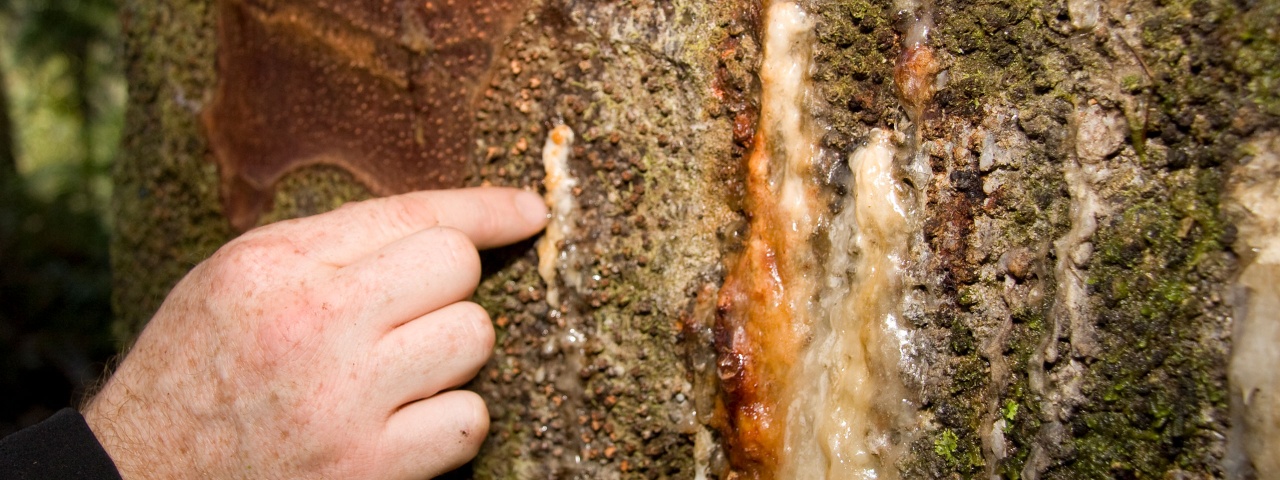You and the rest of our screen industry can help prevent the spread of the disease killing our treasured kauri. This guide will help productions working in the great outdoors do the right thing and protect kauri.
Kauri are a national taonga (treasure) – a Jurassic age species of evergreen counted among the world’s mightiest trees. They can grow more than 50 metres tall and live for well over a thousand years.
But they’re being destroyed by disease.
Kauri dieback disease is caused by an organism identified as Phytophthora agathidicida (PA). It’s a kauri-specific subspecies of ‘water mould’ – a fungus-like invasion that destroys plants worldwide.
As far as we know, nearly all infected kauri die. There is no known cure as yet.
Kauri dieback disease was first detected on Great Barrier Island in the 1970s, and since being confirmed on the mainland about a decade ago, has spread faster than efforts to stop it. The disease is established in areas of the Waitakere Ranges Regional Park, and threatens trees on both public and private land from Northland’s Trounson Kauri Park to the Coromandel Peninsula – including Waipoua Forest, home of forest giant Te Matua Ngahere and his younger, more famous relation Tane Mahuta.
So, how can filmos help?
If you’ve been filming on regional park land lately, you will have noticed that council consent conditions now include information on preventing the spread of kauri dieback, including a requirement to clean gear, tyres and footwear before and after filming on park land.
The condition isn’t there by chance or by mistake – even if you’re not near kauri. Kauri dieback disease spores are long-lived, invisible to the eye, and spread through contaminated soil, which makes humans (and some larger animals, such as pigs) the main cause of spread. The disease can lie dormant while carried from place to place, harboured in the soil, putting currently healthy areas of kauri at risk.
As a highly mobile industry, we might move from a farm to a park, in and out of the studio, and on to regional park land within the space of a few days. If crew are not cleaning shoes or equipment between outdoor shoots, they may be carrying spores between locations and spreading kauri dieback disease.
There are several things we can do to help:
- Most departments already spend time and effort cleaning and looking after gear – put just as much effort into caring for the environment by adding shoes and tyres to the list of items to keep clean, especially when entering or leaving reserve or farmland.
- As much as possible, avoid shooting in areas where kauri are present – but when you need to, stay on tracks and off delicate root systems (and as above, ensure footwear and equipment are thoroughly cleaned before and after).
- Use Sterigene disinfectant as an additional precaution in kauri areas – Sterigene stations are positioned at most track entrances, or are available from regional parks.
- Do not bring any vegetation or soil into a reserve or park without prior approval.
- Help spread the word amongst your crew, and make them ambassadors in reducing spread of the disease: pin flyers to truck noticeboards, include information in call sheets when on park land, and have more details available with unit, ADs and in the production office.
For further information and available resources for Kauri dieback, refer to http://www.kauridieback.co.nz/
